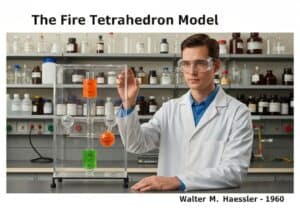The European standard EN 2, ‘Classification of fires’, harmonizes fire classes across member nations. It defines five classes: A (solids), B (liquids), C (gases), D (metals), and F (cooking oils). A key distinction from the US system is that Class C is specifically for flammable gases, and there is no dedicated class for electrical fires; instead, the burning material is classified.
European Fire Classification (EN 2)
- European Committee for Standardization (CEN)
The EN 2 standard was developed to create a single, coherent system for fire classification within the European Union, replacing a patchwork of different national 标准. This harmonization was crucial for the single market, ensuring that a fire extinguisher manufactured in one country would be understood and accepted in another.
The most significant departure from the American NFPA system is the treatment of electrical and gaseous fires. In EN 2, Class C is exclusively for fires involving flammable gases like propane, butane, or natural gas. This recognizes the unique hazard they present, as extinguishing the flame without stopping the gas leak can lead to the formation of an explosive gas cloud. The proper procedure is to isolate the gas supply first.
Fires involving electricity are not given their own class. The European rationale is that electricity is an ignition source, not a fuel. The fire itself involves the material that is burning, such as the plastic insulation on a wire (Class A). Therefore, an extinguisher is rated for its suitability for use on live electrical equipment (indicated on the label, often up to 1000V), but the fire is classified by its fuel. This approach is considered more technically precise, as once the power is cut, the fire’s fundamental nature is simply that of its burning material.
Class F for cooking fats is equivalent to the American Class K, addressing the specific challenges of high-temperature grease fires.
类型
中断
使用方法
前体
- pre-existing national fire classification standards in various european countries
- the influence of the american nfpa classification system
- the formation of the european single market, requiring harmonized standards
- advances in understanding the specific combustion properties of gases
应用
专利:
迎接新挑战
机械工程师、项目、工艺工程师或研发经理
可在短时间内接受新的挑战。
通过 LinkedIn 联系我
塑料金属电子集成、成本设计、GMP、人体工程学、中高容量设备和耗材、精益制造、受监管行业、CE 和 FDA、CAD、Solidworks、精益西格玛黑带、医疗 ISO 13485
相关发明、创新和技术原理












